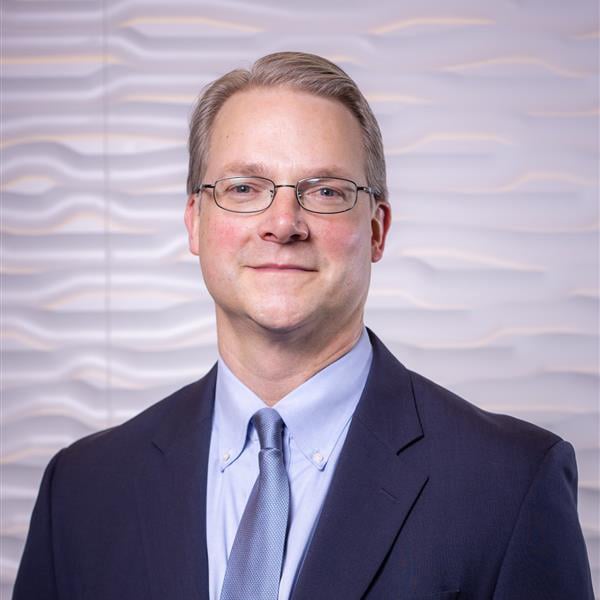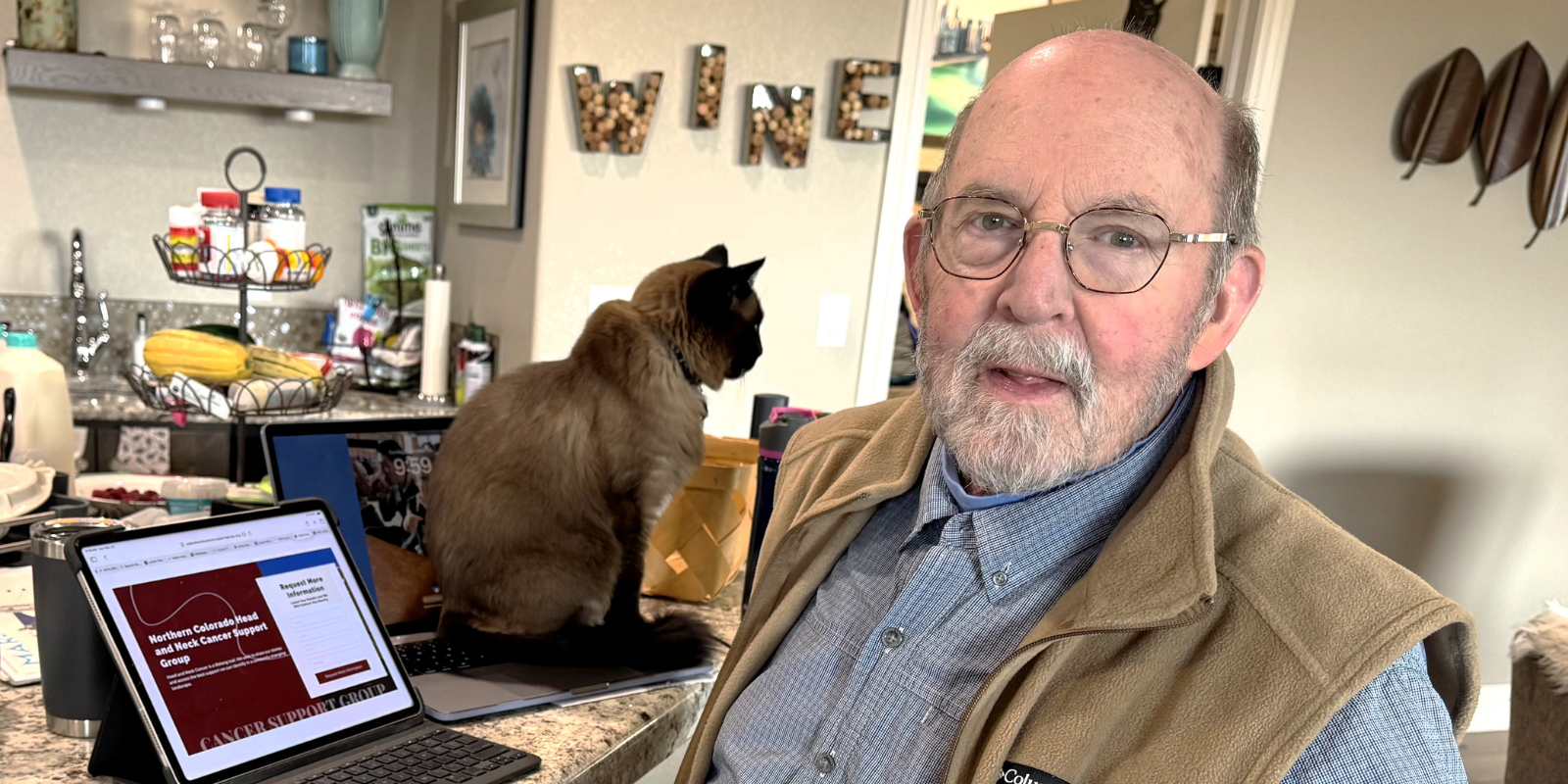Barb Spanjer lay on the floor of her office. She had never been so tired. Her stomach and left side ached, and the pain under her left shoulder blade was relentless. She had seen her doctor a couple of times that autumn of 2017, but the medicine for the ulcer he suspected she had wasn’t working. She had been too tired and too busy running the construction company she and her husband, Steve, owned to follow up with the doctor. But it was getting harder to ignore the symptoms. Something just wasn’t right.
After colonoscopies and an endoscopy, the gastroenterologist called Spanjer, asking her to come in as soon as possible to discuss her test results. With her husband of 43 years and their grown daughters, Kendra and Dana, by her side, Spanjer learned that a 6-centimeter tumor had grown on the tail of her pancreas. As Spanjer recalls, “There are no words to describe the shock, fear, and disbelief you experience. The next thought is ‘we can fix this. Let’s just take it out.’”
Spanjer was referred to the multidisciplinary pancreatic cancer team at the CU Cancer Center, where she met with Wells Messersmith, MD, associate director of clinical services, in January 2018. He had taken her case to the pancreatic cancer multidisciplinary team.
“In that setting we have about 20 people reviewing her case, and there were abnormalities on the scans, things that we weren’t sure about,” Messersmith explains. “She had what we suspected were lesions on her liver, but we weren’t entirely certain.”
Getting a second opinion
With Messersmith’s blessing, the Spanjers flew to Rochester, Minnesota, for a second opinion at the Mayo Clinic. Working with pancreatic surgeon Mark Truty, MD, Spanjer underwent several tests, but it was a MRI/PET scan that showed the lesions on her liver, confirming her cancer was stage 4, Truty told her he wouldn’t be able to operate. With this knowledge came an immeasurable fear and profound sadness.
Spanjer says going to the Mayo Clinic was important, not only for the second opinion, but also to learn that the protocol the Mayo oncologist outlined was the same as what was prescribed by the Colorado team. It was comforting to discover the doctors knew one another and that they shared information, protocols, ideas, and research.
Back in Colorado, Messersmith and the multidisciplinary team had confirmed the tumor had spread to the liver and thus was inoperable. In February, they recommended she start a chemotherapy regimen under the care of Lynn Mathew, MD, and later Anne Kanard, MD. To address the anticipated chemotherapy side effects and other treatment-related issues, Spanjer also began working with the CU Anschutz Health and Wellness Center team. She enrolled in group classes with Jeff Eagan, oncology physical therapist, scheduled appointments with Michelle Hines, acupuncturist and nurse, and worked closely with Gary Goodman, MD, integrative medicine doctor. There, she found wonderful support and helpful strategies for dealing with the challenges of treatment.
Unfortunately, she had an adverse reaction to the chemo and was hospitalized for a week. It was one of many steps on her path met with tears, but also “trying to find your way, find your balance,” Spanjer says. “I realized that faith and family were what would get me through this. I wasn’t strong enough to do it on my own. Steve or my daughters were with me at every appointment, taking notes, asking questions, always looking for options, and, most importantly, being my advocate.”
Spanjer was prescribed a combination of two other chemotherapy drugs, Gemzar and Abraxene, which was effective for approximately 10 months until the tumor began growing again. “That’s when we thought about a clinical trial,” Messersmith says.
Pursuing individualized treatment
In 2019, a trial was opened at the CU Cancer Center studying a combination of the immune checkpoint inhibitor avelumab with the kinase inhibitor binimetinib. The goal of the combination was to improve the body’s immune response and interfere with signaling from the mutated KRAS gene.
Spanjer’s tumor initially shrunk about 10% during the trial, but she began experiencing significant side effects from the binimetinib. As a result, the binimetinib was discontinued, but she was allowed to continue the avelumab until December, when she was hospitalized for internal bleeding from an unknown source. For the next eight months, a combination of FU5 in a half dose was administered, “and her tumor just kept shrinking and shrinking, we assume due to the activation of the immune system,” Messersmith says. “This is where it’s so important to individualize therapy, because when you see a patient with metastatic pancreatic cancer, average survival is about one year. But after two and a half years, Barb’s tumor hadn’t really grown, and things were responding nicely, so we started wondering if maybe we should go ahead and take this thing out. The liver lesions seemed to have disappeared, and we were surprised when scan after scan showed no recurrence in the liver.”
About the same time, Spanjer’s sister-in-law, Jody, called from Grand Junction. One of Jody’s former colleagues had been pancreatic cancer-free for more than 10 years and was very active in the Wings of Hope Pancreatic Cancer Research Foundation. He recommended Spanjer ask about a new surgeon who recently had joined the CU Cancer Center, Marco Del Chiaro, MD, PhD.
“To me, this really highlights how important it is to network and be persistent,” Spanjer says. Fortunately, Messersmith had been consulting with Del Chiaro, a member of the multidisciplinary team, and reviewing her scan results periodically with the entire team.
“Typically, we don’t try to resect stage 4 pancreatic cancer, because generally speaking it’s spread around to too many parts of the body,” Messersmith says. “But when you’ve treated somebody for two and a half years and things are still responding, you start thinking about whether or not you should do resection, especially if the patient is in good shape and you think they’ll get through surgery OK.
“Of course, it depends on the patient’s preferences when you present this information, but the other thing you have to think about is what the future might hold for this patient if you don’t remove the tumor. In Barb’s case, the concern was that the tumor, which was invading her stomach, could eventually cause bleeding or obstruction of the gut.”
In September 2020, Del Chiaro performed surgery, removing the tumor, part of the pancreas, the spleen, part of the stomach, adrenal gland, and lining around the kidney, along with resecting part of the liver. Further biopsies of that portion of her liver showed no evidence of cancer. After surgery, Del Chiaro told Spanjer that Messersmith had done a great job killing the tumor.
Living with gratitude
Currently, Spanjer has blood tests and scans every four months in Fort Collins. So far, tests have shown no recurrence of disease. Reflecting on her journey, she says she has learned vital lessons about listening to her body, finding and trusting a talented multidisciplinary care team, having concerned advocates, and networking to learn from others. Her networking efforts continue through the local pancreatic cancer support group she and two others founded.
When asked whether she worries about a recurrence, Spanjer says, “Of course, but when you’ve been to that really dark place after diagnosis and the therapies give you a reprieve, your priorities shift. Minor irritations fade away, and you have a much deeper appreciation for others and for the beauty of life. My faith enabled me to live with dying, and now I’m living with immense gratitude. I try to live each day to the fullest and be a blessing to others. I approach each day from a place of grace.”




